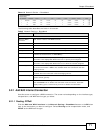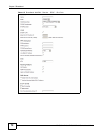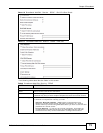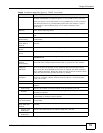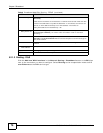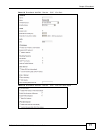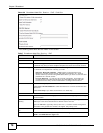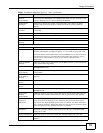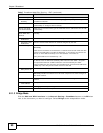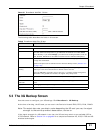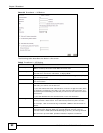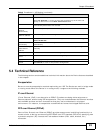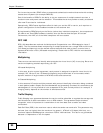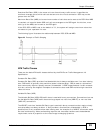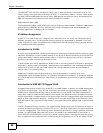
Chapter 5 Broadband
FMG3024-D10A / FMG3025-D10A Series User’s Guide
79
Obtain an IP
Address
Automatically
A static IP address is a fixed IP that your ISP gives you. A dynamic IP address
is not fixed; the ISP assigns you a different one each time you connect to the
Internet. Select this if you have a dynamic IP address.
Enable DHCP
Option 60
Select this to identify the vendor and functionality of the Device in DHCP
requests that the Device sends to a DHCP server when getting a WAN IP
address.
Vendor Class
Identifier
Enter the Vendor Class Identifier (Option 60), such as the type of the hardware
or firmware.
Static IP Address Select this option If the ISP assigned a fixed IP address.
IP Address Enter the static IP address provided by your ISP.
Subnet Mask Enter the subnet mask provided by your ISP.
Gateway IP
Address
Enter the gateway IP address provided by your ISP.
Routing Feature
NAT Enable Select this option to activate NAT on this connection.
IGMP Proxy Enable Internet Group Multicast Protocol (IGMP) is a network-layer protocol used to
establish membership in a Multicast group - it is not used to carry user data.
Select this option to have the Device act as an IGMP proxy on this connection.
This allows the Device to get subscribing information and maintain a joined
member list for each multicast group. It can reduce multicast traffic
significantly.
Apply as Default
Gateway
Select this option to have the Device use the WAN interface of this connection
as the system default gateway.
DNS Server This is available only when you select Apply as Default Gateway in the
Routing Feature field.
Obtain DNS info
Automatically
Select this to have the Device get the DNS server addresses from the ISP
automatically.
Use the following
Static DNS IP
Address
Select this to have the Device use the DNS server addresses you configure
manually.
Primary DNS
Server
Enter the first DNS server address assigned by the ISP.
Secondary DNS
Server
Enter the second DNS server address assigned by the ISP.
IPv6 Address This section is not available when you select Disable in the IPv6/IPv4
DualStack field.
Obtain IPv6
Address
Automatically
Select this option if you want to have the Device use the IPv6 prefix from the
connected router’s Router Advertisement (RA) to generate an IPv6 address.
Enable Non-
temporary
addresses
The DHCPv6 server controls the time at which the client contacts with the
server to extend the lifetimes on any addresses before the lifetimes expire.
After a first time limit specified by the server is reached, the client sends the
server a Renew message. Select this option to have the server renew the lease
before the second server specified time limit is reached.
Enable Prefix
Delegation
Select this to enable Prefix Delegation. This enables an IPv6 router to use the
IPv6 prefix (network address) received from the ISP (or a connected uplink
router) for its LAN.
Static IPv6 Address Select this option if you have a fixed IPv6 address assigned by your ISP.
IPv6 Address Enter the static IPv6 address provided by your ISP using colon (:) hexadecimal
notation.
Table 7 Broadband Add/Edit: Routing - IPoE (continued)
LABEL DESCRIPTION



